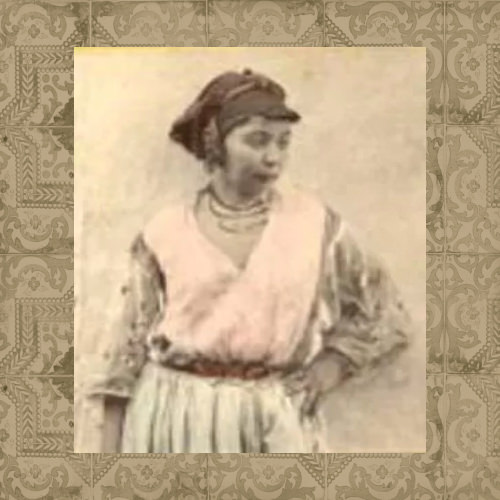Who was Zuza?
Little is known about Zuza Ben i Ford, a dancer from Biskara in Eastern Algeria. Her story as far as I know it is confined to her visit to Newcastle upon Tyne and it is here that it sadly ended.
She was invited, with others from her community, as part of the North East Coast Exhibition in 1929 to come to Newcastle upon Tyne. The exhibition was intended to revive interest and stimulate trade with the region, to place the north east of England within a global context. Local products were to be brought together alongside people and artefacts from around the world.
This included the construction of a full scale African village. The press of the time reported the arrival of the party with a mix of curiosity and racism, referring to them as ‘dusky visitors’ and ‘awfully mischievous rascals’. It was observed that they took advantage of the local hospital facilities ‘with unnecessary frequent visits’. It was also noted with surprise that some of the party were educated! Not all of the locals however had the same attitude toward the group. The enterprising women were able to command a good fee for private dance performances.
The ‘African village’ on the exhibition site represented something of the Western European attitude toward the Arab world at that time. This was a pastiche of what such a village might be, mud huts, kraals, dancing hall and harem. These things would not in fact exist alongside each other and were drawn from communities far distant from each other.
Zuza died of consumption in September 1929 in Newcastle. Her funeral reported as a ’barbaric ritual’, was attended by her husband and her 8 month old child along with a large entourage of African and English mourners. She is buried in an unmarked grave in the Christian cemetery of St Andrews in Jesmond. However there are plans underway to have a culturally appropriate marker erected to show where she lays. I read of her in a local newspaper and was moved to contact the researchers and find out more. The local University are running the project aiming to draw upon some of the parallels between the current international situation and the historical; they intend Zuza to be a focus. Her story is to be recorded in a book and will include contributions of text from both countries in order to reflect upon the different views both cultures hold/held.
Parallels may be drawn with ‘Tribal Style Dancing’ and the conglomerate African Village of the exhibition, representing all and yet little of the individual cultures of the Arab world at that time. My response is that what I do as a Tribal dancer celebrates many cultures, drawing from their costume and dance traditions, bringing them together in a fusion that aims to make them accessible and enjoyed by many. I believe that the travelling people of the ancient world would have carried ideas on music and dance along with their wares as they traded, so there has always been exchange and evolution.
Fat Chance Belly Dancel Style has evolved quickly, in today’s world things do, modern communication and travel have facilitated this. Already we are seeing many new facets of this style emerging as women bring to it their own personal herstory.

